You can use the following function to open an explorer window and have it point to a specific directory.
USES Windows,ShellAPI;
FUNCTION ExploreDirectory(CONST Dir : STRING) : BOOLEAN;
BEGIN
Result:=(ShellExecute(GetDesktopWindow,'open',PChar(Dir),'','',SW_SHOW)>32)
END;
Note, however, that you can't (with this code) make the Explorer window "follow" your program, ie. the opened window is a completely autonomous window that has no link to your program, just as if the user had browsed to the directory himself. If you call this function again with a new directory, Explorer will open a new window with that directory (and keep the old one opened).
UPDATE:
If you want to be able to manipulate the explorer window after it is opened, you need to use the various interfaces that Explorer exposes. I have made a UNIT that allows you to do what you seek as well as returning the interface needed to be able to manipulate the window afterwards. It is heavily based on the code found in this answer:
Check if windows explorer already opened on given path
by Victoria
UNIT WindowsExplorer;
INTERFACE
USES Types,ShDocVw;
FUNCTION ExploreDirectory(CONST Dir : STRING) : BOOLEAN;
FUNCTION OpenFolder(CONST Dir : STRING) : IWebBrowserApp; OVERLOAD;
FUNCTION OpenFolderAt(CONST Dir : STRING ; Left,Top,Width,Height : INTEGER) : IWebBrowserApp; OVERLOAD;
FUNCTION OpenFolderAt(CONST Dir : STRING ; CONST Rect : TRect) : IWebBrowserApp; OVERLOAD; INLINE;
IMPLEMENTATION
USES Windows,Variants,ShlObj,Ole2,OleAuto,ShellAPI,ActiveX,SysUtils;
FUNCTION ExploreDirectory(CONST Dir : STRING) : BOOLEAN;
BEGIN
Result:=(ShellExecute(GetDesktopWindow,'open',PChar(Dir),'','',SW_SHOW)>32)
END;
FUNCTION GetFolderIDList(CONST Dir : STRING) : PItemIDList;
VAR
ShellFolder : IShellFolder;
Attributes : ULONG;
Count : ULONG;
BEGIN
OleCheck(SHGetDesktopFolder(ShellFolder));
Attributes:=SFGAO_FOLDER or SFGAO_STREAM;
OleCheck(ShellFolder.ParseDisplayName(0,NIL,PWideChar(WideString(Dir)),Count,Result,Attributes));
IF NOT ((Attributes AND SFGAO_FOLDER=SFGAO_FOLDER) AND (Attributes AND SFGAO_STREAM<>SFGAO_STREAM)) THEN BEGIN
CoTaskMemFree(Result);
Result:=NIL
END
END;
FUNCTION OpenFolder(CONST Dir : STRING ; OpenIfNotFound : BOOLEAN) : IWebBrowserApp; OVERLOAD;
CONST
IID_IServiceProvider: System.TGUID = '{6D5140C1-7436-11CE-8034-00AA006009FA}';
VAR
FolderID : PItemIDList;
ShellWindows : IShellWindows;
I : INTEGER;
WndIFace : System.IDispatch;
WebBrowserApp : IWebBrowserApp;
ServiceProvider : IServiceProvider;
ShellBrowser : IShellBrowser;
ShellView : IShellView;
FolderView : IFolderView;
PersistFolder : IPersistFolder2;
CurFolderID : PItemIDList;
BEGIN
FolderID:=GetFolderIDList(Dir);
IF Assigned(FolderID) THEN TRY
OleCheck(CoCreateInstance(CLASS_ShellWindows,NIL,CLSCTX_LOCAL_SERVER,IID_IShellWindows,ShellWindows));
FOR I:=0 TO PRED(ShellWindows.Count) DO BEGIN
WndIface:=ShellWindows.Item(VarAsType(I,VT_I4));
IF Assigned(WndIface) AND
Succeeded(WndIface.QueryInterface(IID_IWebBrowserApp,WebBrowserApp)) AND
Succeeded(WebBrowserApp.QueryInterface(IID_IServiceProvider,ServiceProvider)) AND
Succeeded(ServiceProvider.QueryService(SID_STopLevelBrowser,IID_IShellBrowser,ShellBrowser)) AND
Succeeded(ShellBrowser.QueryActiveShellView(ShellView)) AND
Succeeded(ShellView.QueryInterface(IID_IFolderView,FolderView)) AND
Succeeded(FolderView.GetFolder(IID_IPersistFolder2,PersistFolder)) AND
Succeeded(PersistFolder.GetCurFolder(CurFolderID)) AND
ILIsEqual(FolderID,CurFolderID) THEN BEGIN
IF IsIconic(WebBrowserApp.HWnd) THEN Win32Check(ShowWindow(WebBrowserApp.HWnd,SW_RESTORE));
Win32Check(SetForegroundWindow(WebBrowserApp.HWnd));
Exit(WebBrowserApp)
END
END
FINALLY
CoTaskMemFree(FolderID)
END;
Result:=NIL;
IF OpenIfNotFound THEN BEGIN
IF NOT ExploreDirectory(Dir) THEN EXIT;
FOR I:=1 TO 20 DO BEGIN
Result:=OpenFolder(Dir,FALSE);
IF Assigned(Result) THEN EXIT;
Sleep(100)
END
END
END;
FUNCTION OpenFolder(CONST Dir : STRING) : IWebBrowserApp;
BEGIN
Result:=OpenFolder(Dir,TRUE)
END;
FUNCTION OpenFolderAt(CONST Dir : STRING ; Left,Top,Width,Height : INTEGER) : IWebBrowserApp;
BEGIN
Result:=OpenFolder(Dir);
IF Assigned(Result) THEN BEGIN
Result.Left:=Left; Result.Top:=Top; Result.Width:=Width; Result.Height:=Height
END
END;
FUNCTION OpenFolderAt(CONST Dir : STRING ; CONST Rect : TRect) : IWebBrowserApp;
BEGIN
Result:=OpenFolderAt(Dir,Rect.Left,Rect.Top,Rect.Width,Rect.Height)
END;
END.
It is made for use with Delphi Tokyo 10.2.3 so if you use an earlier version (you didn't specify Delphi version in your question), you may need to adapt the USES list to match.
